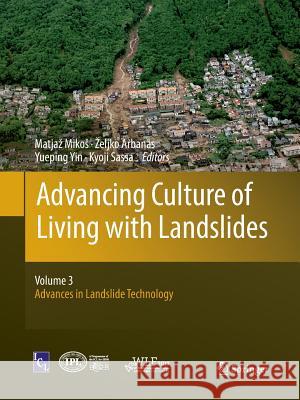Advancing Culture of Living with Landslides: Volume 3 Advances in Landslide Technology » książka
topmenu
Advancing Culture of Living with Landslides: Volume 3 Advances in Landslide Technology
ISBN-13: 9783030104160 / Angielski / Miękka / 2018 / 621 str.
Kategorie BISAC:
Wydawca:
Springer
Język:
Angielski
ISBN-13:
9783030104160
Rok wydania:
2018
Wydanie:
Softcover Repri
Ilość stron:
621
Waga:
1.42 kg
Wymiary:
27.94 x 20.96 x 3.3
Oprawa:
Miękka
Wolumenów:
01
Dodatkowe informacje:
Wydanie ilustrowane











